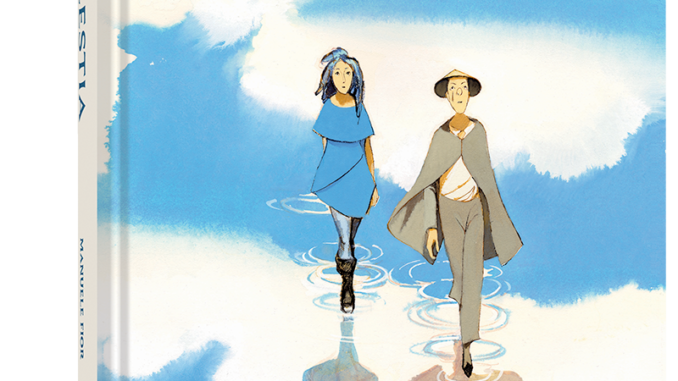
European comics are in a genre of their own. They seem to be more focused on great art and the stories tend to be a bit more experimental than American comics. That same principle rings true with Manuele Fior’s “Celestia.â€Â
A “Great Invasion†has caused people to flee from the mainland and live on islands. One of these islands is Celestia where a great artist named Pierrot lives. One day he and a telepath Dora escape Celestia and discover what is on the mainland. The story is one of those weird European stories where the plot seems like it’s going to be epic but it’s just two people doing mostly mundane things with some adventure thrown in. It’s a slog with some “it’s supposed to be artistic but comes off as making zero sense†dialogue.
There is a market for this kind of story, but if you want anything that’s coherent and has some kind of point to it, look elsewhere. It’s more to play with your mind than entertaining. The artwork on the other hand is a masterpiece. It looks like European modernist paintings in the same vein as Picasso and Van Gogh. The character designs have that weird look that reminiscent of Picasso’s “Les Demoiselles d’Avignon.†The characters aren’t the best thing about the art, rather it’s the backgrounds.
The backgrounds look fantastic. Celestia looks like Venice with the gothic architecture, canals and even apartments with the pullies used to bring up baskets of food to people in said apartments. There are even panels with nature scenes that you can’t help but look at and admire for long periods. There is one scene in the comic that is weird 1980s traveling through time in a futuristic vehicle that comes out of nowhere, though.Â
The plot to “Celestia†may not be for anyone, but what it lacks in writing more than makes up for in art. It is a masterpiece in its own right. If you’re OK with just looking at a comic’s art and ignoring the plot this comic is one exception.

Leave a Reply